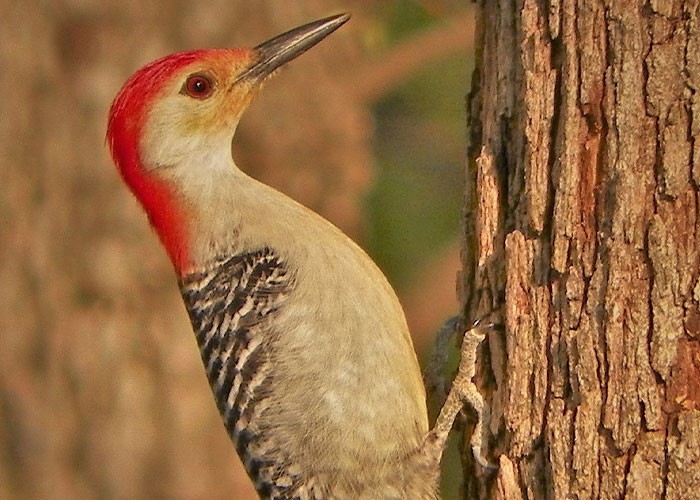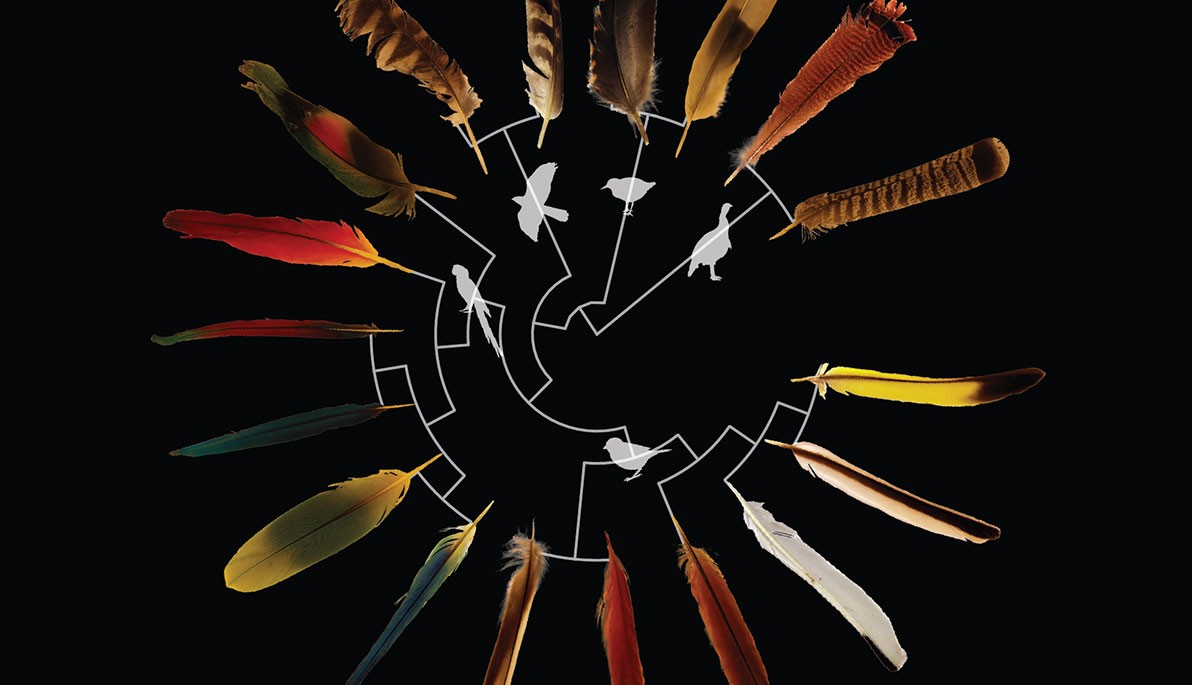News
Beyond the Bones: (Climbing) Birds of a Feather
June 26, 2023
Pictured: An illustration of feathers and related species represents the researchers’ larger body of analysis, which compared data across a diverse sample of more than 600 feathers and nearly 800 species.
Across land, air, and sea, this summer New York Tech News is highlighting some of the recent studies published by the College of Osteopathic Medicine’s (NYITCOM) Department of Anatomy. The “Beyond the Bones” series is a snapshot of just a few of the projects helping to shape scientific understanding about evolution.
In this latest installment, a team of researchers, including an Osteopathic Medicine, D.O./Medical & Biological Sciences, Ph.D. (D.O./Ph.D.) student, discover how birds use their tail anatomy, including feathers, to climb.
Birds have a remarkably diverse lineage. In addition to those that fly, ostriches run at high speeds, penguins swim, and other species, like woodpeckers and parrots, are known to climb vertically.
For more than 50 years, researchers have believed that these birds are able to climb through the support of a helping hand—or rather, a helping tail. It’s been speculated that stiffening of the tailfeathers allows the tail to act as a support strut. However, this theory has never been officially demonstrated.
Now, as seen in a study published May 10 in the journal Proceedings of the Royal Society B, a research team led by Postdoctoral Fellow Edwin Dickinson, Ph.D., D.O./Ph.D. student Melody Young, and Assistant Professor of Anatomy Michael Granatosky, Ph.D., demonstrate the tail adaptations that enable birds to climb.
Using statistical regression, the team compared data across a diverse sample of more than 600 feathers and nearly 800 species. They found that climbing is not associated with increased keratin composition, which would, in theory, lead to stiffer individual feathers. Instead, they discovered that climbing is made possible by the overall lengthening of the feather itself and a geometric rearrangement of the feather shaft enables climbing. Importantly, the researchers identified these adaptations across multiple bird groups.
Other researchers named in the study include NYITCOM students Burcak Bas, Bettina Zou, and Aleksandra Ratkiewicz, as well as Associate Professor Brian Beatty, Ph.D.
This is not the first time NYITCOM investigators have researched climbing in birds. Last year, Young, Granatosky, and Dickinson published findings that showed parrots used their beaks as a “third limb” to propel themselves.

A woodpecker climbs a tree, using its tail feathers for support.
Learn more about innovative research from the Department of Anatomy’s esteemed faculty.




_Thumb.jpg)
